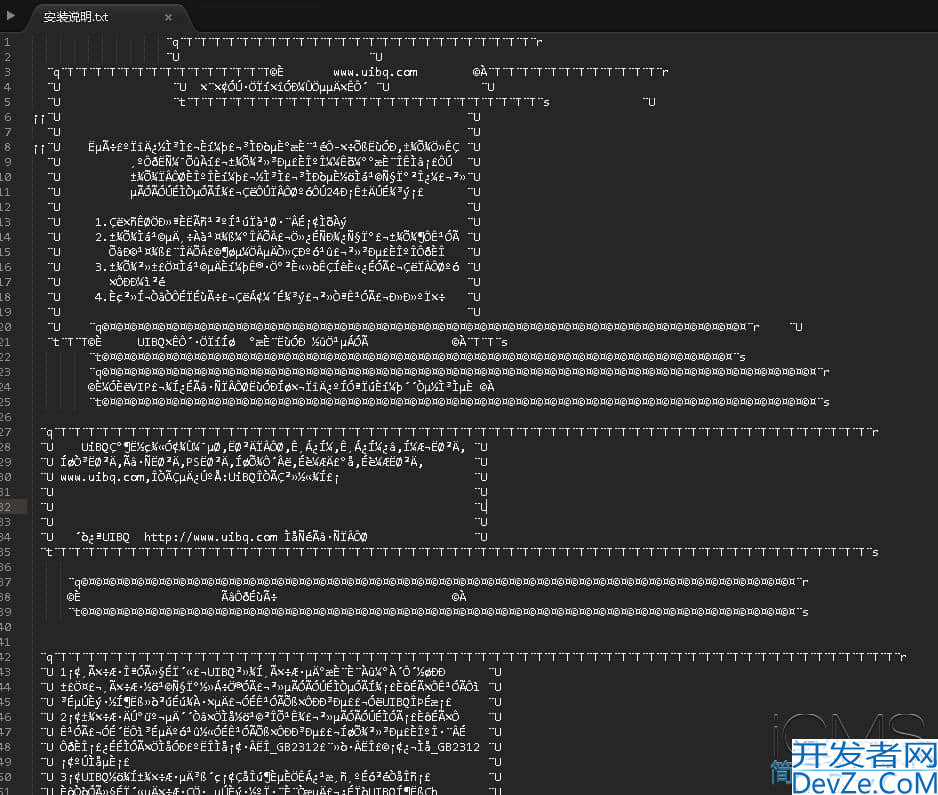利用SpringBoot与WebSocket实现实时双向通信功能
目录
- 前言
- WebSocket协议简介
- WebSocket协议的优势
- WebSocket的应用场景
- Spring Boot中实现WebSocket
- 1. 配置 WebSocket 端点
- 2. 创建 WebSocket 处理类
- 3. 客户端的 WebSocket 连接
- WebSocket 与 STOMP 协议集成
- 1. 引入 STOMP 依赖
- 2. WebSocket 配置与 STOMP 协议启用
- 3. WebSocket 控制器
- 4. 前端页面集成 STOMP 协议
- 小结
- 总结
演示环境说明:
- 开发工具:IDEA 2021.3
- JDK版本: JDK 1.8
- Spring Boot版本:2.3.1 RELEASE
- Maven版本:3.8.2
- 操作系统:Windows 11
前言
随着互联网技术的飞速发展,实时通信技术已经逐渐成为现代Web应用的核心需求。无论是在即时消息系统、在线游戏、金融交易平台,还是物联网(IoT)应用中,WebSocket都提供了一种高效、持久的双向通信方式。特别是在需要低延迟的场景下,WebSocket的优势尤为突出。本文将深入解析如何利用Spring Boot实现WebSocket通信,进而结合STOMP协议,构建一个功能强大的实时聊天室应用。
WebSocket协议简介
WebSocket协议自html5引入以来,成为了现代Web应用的重要组成部分。它打破了传统HTTP协议只能在请求和响应的周期内进行单向通信的限制,实现了双向通信,并保持持久连接。
WebSocket协议的优势
- 低延迟:WebSocket连接是持久性的连接,避免了频繁的握手过程。消息从客户端到服务器,再到客户端的延迟极低,非常适合即时通讯和实时推送场景。
- 节省带宽:相比HTTP的请求-响应模式,WebSocket连接不需要每次传输都重新建立连接,节省了很多带宽和计算资源。
- 全双工通信:客户端和服务器都可以随时发送数据,不需要等待对方回应。这使得实时互动应用变得更加灵活和高效。
WebSocket的应用场景
- 实时聊天:例如即时通讯、客服系统,WebSocket允许即时传递消息。
- 实时数据推送:例如股市行情、体育比赛实时得分等,WebSocket使得数据可以实时推送到客户端。
- 在线游戏:WebSocket能够实现游戏玩家之间的即时互动和实时数据同步。
- 物联网(IoT):WebSocket能够帮助传感器和设备实时通信,提供更及时的数据反馈。
Spring Boot中实现WebSocket
Spring Boot 是一个开箱即用的框架,集成了多种常用功能,帮助开发者快速实现应用的功能。Spring Boot 对 WebSocket 的支持非常全面,允许我们轻松地配置 WebSocket 服务。
1. 配置 WebSocket 端点
在 Spring Boot 中配置 WebSocket 服务非常简单,我们需要做以下几步:
- 创建一个 WebSocket 配置类,并使用
@EnableWebSocket注解启用 WebSocket 功能。 - 在配置类中注册 WebSocket 端点,配置客户端连接路径。
package com.example.websocket.config;
import org.springframework.context.annotation.Configuration;
import org.springframework.web.socket.WebSocketHandler;
import org.springframework.web.socket.config.annotation.EnableWebSocket;
import org.springframework.web.socket.config.annotation.WebSocketConfigurer;
import org.springframework.web.socket.config.annotation.WebSocketHandlerRegistry;
@Configuration
@EnableWebSocket
public class WebSocketConfig implements WebSocketConfigurer {
@Override
public void registerWebSocketHandlers(WebSocketHandlerRegistry registry) {
// 注册WebSocketHandler,"/chat"是客户端连接WebSocket时访问的路径
registry.addHandler(new WebSocketHandlerImpl(), "/chat")
.setAllowedOrigins("*"); // 允许跨域请求
}
}
2. 创建 WebSocket 处理类
WebSocket 处理类负责接收客户端发送的消息并做出响应。我们通过继承 TextWebSocketHandler 类来实现消息的处理:
package com.example.websocket.handler;
import org.springframework.web.socket.WebSocketHandler;
import org.springframework.web.socket.TextMessage;
import org.springframework.web.socket.WebSocketSession;
import org.springframework.web.socket.CloseStatus;
import org.springframework.web.socket.handler.TextWebSocketHandler;
public class WebSocketHandlerImpl extends TextWebSocketHandler {
@Override
public void handleTextMessage(WebSocketSession session, TextMessage message) {
try {
// 处理客户端发送的消息,并向客户端发送回应消息
System.out.println("Received message: " + message.getPayload());
session.sendMessage(new TextMessage("Echo: " + message.getPayload()));
} catch (Exception e) {
e.printStackTrace();
}
}
@Override
public void afterConnectionEstablished(WebSocketSession session) throws Exception {
System.out.println("WebSocket connection established");
}
@Override
public void afterConnectionClosed(WebSocketSession session, CloseStatus status) throws Exception {
System.out.println("WebSocket connection closed");
}
}
3. 客户端的 WebSocket 连接
在前端页面,我们使用原生 JavaScript 创建 WebSocket 连接。客户端通过 new WebSocket() 方法与服务器建立连接:
<!DOCTYPE html>
<html lang="en">
<head>
<meta charset="UTF-8">
<meta name="viewport" content="width=device-width, initial-scale=1.0">
<title>WebSocket Chat</title>
</head>
<body>
<h1>WebSocket Chat</h1>
<div>
<input type="text" id="messageInput" placeholder="Enter a message">
<button onclick="sendMessage()">Send</button>
</div>
<div id="messages"></div>
<script>
const socket = new WebSocket("ws://localhost:8080/chat");
// 接收服务器发送的消息
socket.onmessage = function(event) {
const message = event.data;
const messagesDiv = document.getElementById("messages");
const newMessage = document.createElement("p");
newMessage.textContent = message;
messagesDiv.appendChild(newMessage);
};
// 向服务器发送消息
function sendMessage() {
const messageInput = document.getElementById("messageInput");
const message = messageInput.value;
socket.send(messjsage);
messageInput.value = ''; // 清空输入框
}
</script>
</body>
</html>
在这个例子中,我们创建了一个简单的聊天室应用,前端通过 WebSocket 与后端建立了连接,客户端输入消息并通过 WebSocket 发送给服务器,服务器将其原样返回。
WebSocket 与 STOMP 协议集成
虽然 WebSocket 本身支持双向通信,但它的消息处理方式较为基础,适合一些简单的场景。然而,STOMP 协议为 WebSocket 提供了更加高级的消息处理机制,能够实现消息的广播、订阅、队列处理等。
1. 引入 STOMP 依赖
首先,我们需要在 pom.XML 中引入 spring-boot-starter-websocket 和 spring-messaging 依赖:
<dependency>
<groupId>org.springframework.boot</groupId>
<artifactId>spring-boot-starter-websocket</artifactId>
</dependency>
<dependency>
<groupId>org.springframework.messaging</groupId>
<artifactId>spring-messaging</artifactId>
</dependency>
2. WebSocket 配置与 STOMP 协议启用
通过 @EnableWebSocketMessageBroker 注解启用 STOMP 协议,配置消息代理和 STOMP 端点。
package com.example.websocket.config;
import org.springframework.context.annotation.Configuration;
import org.springframework.messaging.simp.config.MessageBrokerRegistry;
import org.springframework.web.socket.config.annotation.EnableWebSocketMessageBroker;
import org.springframework.web.socket.config.annotation.StompEndpointRegistry;
import org.springframework.web.socket.config.annotation.WebSocketMessageBrokerConfigurer;
@Configuration
@EnableWebSocketMessageBroker
public class WebSocketConfig implements WebSocketMessageBrokerConfigurer {
@Override
public void registerStompEndpoints(StompEndpointRegistry registry) {
// 注册STOMP端点,客户端将通过这个端点连接WebSocket
registry.addEndpoint("/gs-guide-websocket").withSockjs();
}
@Override
public void configureMessageBroker(MessageBrokerRegistry registry) {
// 配置消息代理
registry.setApplicationDestinationPrefixes("/app");
registry.enableSimpleBroker("/topic");
}
}
解释:
registerStompEndpoints方法注册 STOMP 端点,客户端将通过该端点连接到 WebSocket 服务。configureMessageBroker方法启用消息代理,/app是应用消息的前缀,/topic是消息广播的主题。
3. WebSocket 控制器
使用 STOMP 协议时,我们可以通过 @MessageMapping 注解来接收客户端的消息,使用 @SendTo 注解广播消息:
package com.example.websocket.controller;
import org.springframework.messaging.handler.annotation.MessageMapping;
import org.springframework.messaging.handler.annotation.SendTo;
import org.springframework.stereotype.Controller;
@Controller
public class ChatController {
@MessageMapping("/chat.sendMessage")
@SendTo("/topic/public")
public String sendMessage(String message) throws Exception {
return message;
}
}
解释:
@MessageMapping("/chat.sendMessage")表示当客户端发送消息到/app/chat.sendMessage时,方法将被触发。@SendTo("/topic/public")表示将结果发送到/topic/public主题,并广播给所有订阅该主题的客户端。
4. 前端页面集成 STOMP 协议
客户端通过 SockJS 和 Stomp.js 库与服务器建立 WebSocket 连接,并进行消息交换:
<!DOCTYPE html>
<html lang="en">
<head>
<meta charset="UTF-8">
<meta name="viewport" content="width=device-width, initial-scale=1.0">
<title>STOMP WebSocket Chat</title>
<script src="https://cdn.jsdelivr.net/npm/sockjs-client/dist/sockjs.min.js"></script>
<script src="https://cdn.jsdelivr.net/npm/stompjs"></script>
</head>
<body>
<h1>STOMP WebSocket Chat</h1>
<div>
<input type="text" id="messageInput" placeholder="Enter a message">
<button onclick="sendMessage()">Send</button>
</div>
<div id="messages"></div>
<script>
const socket = new SockJS("/gs-guide-websocket");
const stompClient = Stomp.over(socket);
stompClient.connect({}, function (frame) {
consolepython.log('Connected: ' + frame);
stompClient.subscribepython('/topic/public', function (messageOutput) {
const message = messageOutput.body;
const messagesDiv = document.getElementById("messages");
const newMessage = document.createElement("p");
newMessage.textContent = message;
messagesDiv.appendChild(newMessage);
});
});
function sendMessage() {
const messageInput = document.getElementById("messageInput");
const message = messageInput.value;
stompClient.send("/app/chat.sendMessage", {}, message);
messageInput.value = '';
}
</script>
</body>
</html>
解释:
SockJS提供 WebSocket 降级支持,确保客户端在 WebSocket 不可用时也能连接。stompClient.send("/app/chat.sendMessage", {}, message)发送消息到服务器,服务器将消息广播到所有订阅的客户端。
小结
- WebSocket 是一种持久连接协议,提供了低延迟的双向通信,适用于实时数据传输场景。
- STOMP 协议 使 WebSojscket 消息的处理更加高效,支持发布/订阅模型,适合于构建复杂的实时应用。
- 使用 Spring Boot,我们能够轻松配置 WebSocket 和 STOMP,快速实现实时通信功能。
总结
通过本文的学习,我们了解了如何在 Spring Boot 中实现 WebSocket 双向通信,并结合 STOMP 协议构建一个简单的实时聊天应用。WebSocket 提供了高效的实时通信机制,而 STOMP 协议则为 WebSocket 提供了更加灵活的消息推送方式,能够满足复杂应用场景的需求。
实时通信是现代Web编程客栈应用的重要组成部分,WebSocket 和 STOMP 协议为我们提供了低延迟、可靠的解决方案。通过结合 Spring Boot 的 WebSocket 支持,开发者可以非常方便地构建实时通信应用。掌握这些技术,可以为你在开发即时消息系统、在线游戏、物联网等应用中提供强有力的支持。
希望本文的深入解析能帮助你更好地理解 WebSocket 和 STOMP 协议的原理,并能够在实际项目中应用这些技术!
以上就是利用SpringBoot与WebSocket实现实时双向通信功能的详细内容,更多关于SpringBoot WebSocket双向通信的资料请关注编程客栈(www.devze.com)其它相关文章!






 加载中,请稍侯......
加载中,请稍侯......
精彩评论